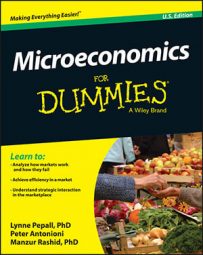Allocative efficiency is related to the concept of Pareto efficiency that economists use to look at social welfare, but it has important aspects that are driven by efficiency in production. Essentially, if something is allocatively efficient, one party can't possibly be made better off without making another party worse off.
Here's a simple example to illustrate the point: Suppose Alice and Bob are allocated money from a central pot of $100, and you record the allocations twice:
In the first round you allocate the whole $100, and Alice and Bob each get half, $50. Now within this framework, you can't give either Alice or Bob more without making the other worse off, and so the distribution is allocatively efficient.
But if you hold back $1 and distribute $99 to Alice and Bob, any distribution between the two isn't allocatively efficient, because you can simply release the $1 and make either party better off, without making the other worse off!
In the context of production, when a firm is operating at lowest possible cost, it's also allocating efficiently its budget for inputs between capital and labor. This occurs — you guessed it! — when the average cost of the firm is at a minimum.
When all firms operate at their minimum cost, welfare in society is maximized.

